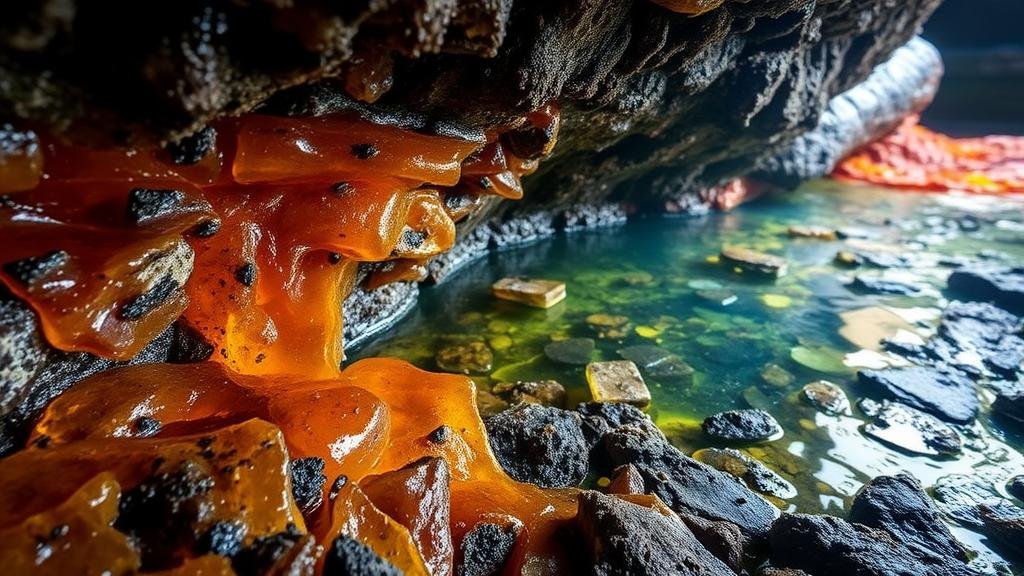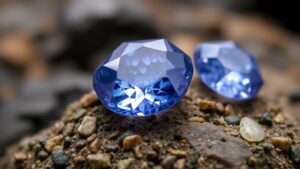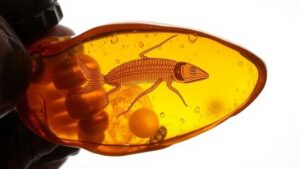The Forgotten Amber Mines of the Baltics: Unearthing Prehistoric Ecosystems
The Forgotten Amber Mines of the Baltics: Unearthing Prehistoric Ecosystems for Rockhounds and Mineral Collectors
The Baltic region, particularly areas such as Lithuania, Latvia, and Estonia, is renowned for its rich deposits of amber. Once discarded as mere ocean debris, amber has now captivated fossil enthusiasts and collectors worldwide due to its unique beauty and the prehistoric ecosystems it encapsulates. This article explores the historical significance, geological context, and practical insights for rockhounds interested in these storied amber mines.
Amber: The Fossilized Resin of the Past
Amber is not a mineral in the traditional sense; rather, it is fossilized tree resin that has undergone polymerization over millions of years. Primarily derived from ancient coniferous trees, Baltic amber dates back to the Late Eocene epoch, approximately 34 to 56 million years ago. The chemical composition of amber is primarily succinic acid, which accounts for about 7% of its weight, contributing to its fragility and range of colors–from golden yellows to intriguing greens and blues.
The Geological Landscape of the Baltic Mines
The Baltic amber deposits primarily reside in the Sedimentary Basin of the region, particularly within the Flysch and other marine sediments of the Upper Eocene epoch. This geological formation measures up to 100 meters in thickness in some areas. extraction sites often present a complex stratigraphy featuring:
- Coarse sand layers
- Clay beds rich in organic material
- Interspersed layers of limestone
Such variations in sediment allow the formation of significant quantities of amber, creating an exceptional opportunity for collectors to explore. Estimates suggest that the Baltic Sea region contains over 90% of the worlds amber reserves.
Amber Mining: Historical and Modern Practices
Historically, amber mining in the Baltic region can be traced back to the Stone Age, where it was sought after for tools and ornamental objects. Today, amber mining remains largely artisanal. Modern techniques vary from dredging in shallow waters to digging in established quarries, employing excavation tools within designated sites.
Currently, large-scale mining operations are extensive in Kaliningrad, Russia, accounting for roughly 60% of global amber production. Miners in Lithuania and Latvia have adapted to stricter environmental regulations, focusing on sustainable practices while maintaining historical mining traditions.
Ecological Significance and the Value of Inclusions
One of the most fascinating aspects of amber is its ability to preserve prehistoric ecosystems. Inclusions like insects, plant material, and small vertebrates provide a window into the past. Over 1,000 different inclusions, including species such as:
- A prehistoric mosquito, related to todays Anopheles
- Fossilized ferns and floral parts
have been discovered in Baltic amber. These inclusions not only offer insights into ancient biodiversity but are also a significant factor in determining the value of a piece of amber in the collectible market. Inclusions can increase the price exponentially, with specimens fetching thousands of dollars at auctions.
Tips for Rockhounds and Mineral Collectors
For those interested in mining or collecting amber, consider the following practical tips:
- Research Locations: Identify specific sites in the Baltic region that allow collecting. Popular spots include the beaches along the Curonian Spit and sites near the town of Palanga.
- Respect Local Laws: Familiarize yourself with the regulations regarding amber collection, as illegal mining can carry severe penalties.
- Use Proper Tools: Equip yourself with tools like a trowel for digging, a small sifter or mesh for finer materials, and a magnifying glass to inspect for inclusions.
- Join Local Groups: Engage with local rockhound clubs or online forums for tips on best practices and community organizing for field trips.
As scientific advancements and conservation efforts continue, the Baltic amber mines offer a unique intersection of nature, history, and commerce that inspires rockhounds and collectors alike. By tapping into these ancient ecosystems, collectors can not only add notable pieces to their collections but also contribute to ongoing discussions about biodiversity and geological history.
Conclusion: Unearth the Fascination
In summary, the forgotten amber mines of the Baltics represent a rich tapestry of natural history and geological wonders. Understanding amber’s origins and the practices surrounding its collection can enhance your appreciation of this beautiful, ancient material. Whether you are a seasoned rockhound or a curious novice, exploring these mines opens doors to the past, offering both aesthetic enjoyment and educational value. The treasures unearthed here are not merely stones; they symbolize the interconnectedness of life through millennia.



